Germany chose only four tanks from the heterogeneous fleet captured from France in 1940: the SOMUA S 35 cavalry tank, Char B1 bis battle tank, as well as the Renault R 35 and Hotchkiss H 39 light tanks. The Char B1 bis and Renault R 35 soon fell far behind the front lines due to serious reliability issues. The two remaining vehicles, renamed Pz.Kpfw.35 S (f) and Pz.Kpfw.38 H (f) also rarely saw front line use, but remained in service for much longer. The military career of captured Hotchkiss tanks continued past the end of WWII.
The best of the worst
The Hotchkiss H 35 and H 39 were actively used in May-June 1940, as they were some of the best French light tanks. As a result, more than a third of these vehicles were irreparably lost. Nevertheless, the Germans captured a wealth of trophies after the French campaign, including about 600 tanks of both types and the Hotchkiss factory itself. The Germans even had plans to continue H 39 production. This was the only French tank they seriously considered keeping in production.
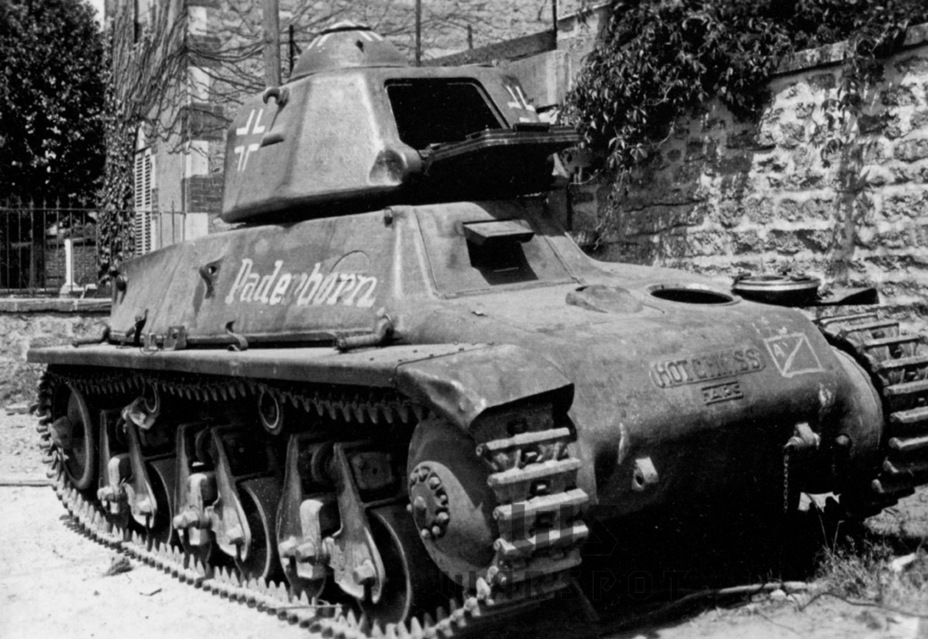
The secret in this unusual behaviour is in the characteristics of the Hotchkiss H 39. While French medium and heavy tanks didn't fit the Wehrmacht's requirements for these types of tanks, the light tank was a different story. German light tanks also had one-man turrets and the difference in observation wasn't great. The only advantage of the Pz.Kpfw.II over the H 39 was the presence of a radio operator. A portion of the French tanks were also equipped with radios.
The H 39 had an advantage over other French light tanks, the Renault R 35 and FCM 36: mobility. Its power to weight ratio was inferior to that of the Pz.Kpfw.II Ausf.C, but the top speed was close. The speed of 16 kph on dirt roads was also satisfactory. This was the end of its drawbacks, and there were plenty of advantages to go with them. The German light tank lost to the French one in protection. Furthermore, starting in 1940 French tanks were equipped with the 37 mm SA 38 cannon that could penetrate up to 38 mm of armour. Even with the SA 18 gun, the French tank surpassed its opponent, as it could simply not penetrate the thick armour of the H 39.
These were weighty arguments to continue production. The Hotchkiss factory still had 7 half-finished tanks and 25 French workers. However, production was never restarted. The French didn't want to build tanks for the Germans and they couldn't be convinced otherwise.
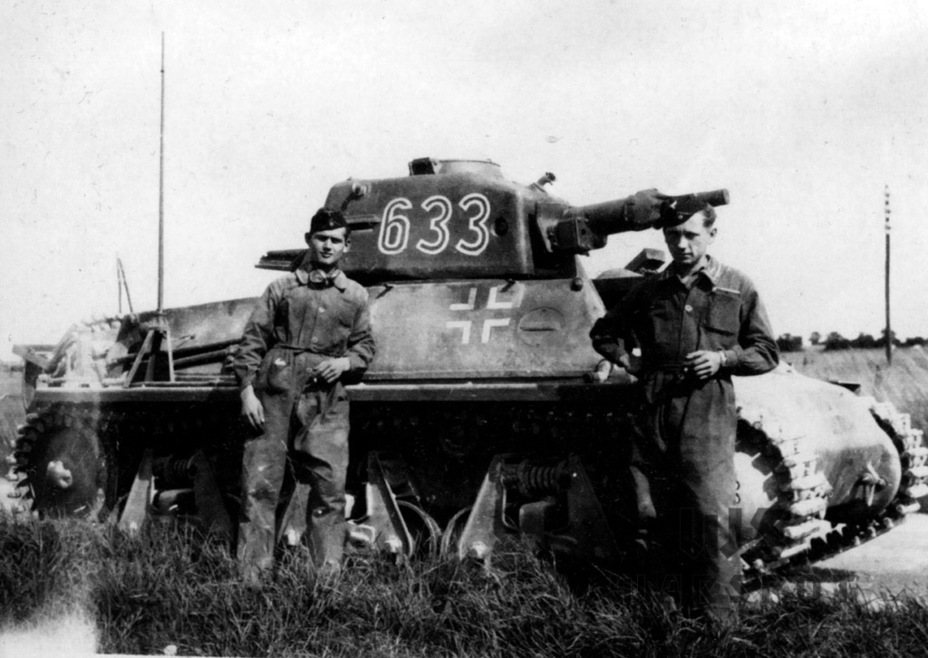
The Hotchkiss factory was later handed off to Alfred Bekker, the author of many French and British vehicle conversions. Saint Denis began working on repairing the H 35 and H 39 and converting them to the needs of their new masters. About 200 of the captured tanks were repaired and 400 converted by November 5th, 1941. The commander's cupola left much to be desired, and so it was cut off and replaced with a two flap hatch that could either be used for observation or to enter the tank. The next stage was installation of a radio or replacing the existing one with a German one. The French radios were worse and the location of the antenna on the roof was not the greatest idea. The antenna port was placed on the engine deck on the right side, which made it less likely to be hit by the tank's own gunfire.
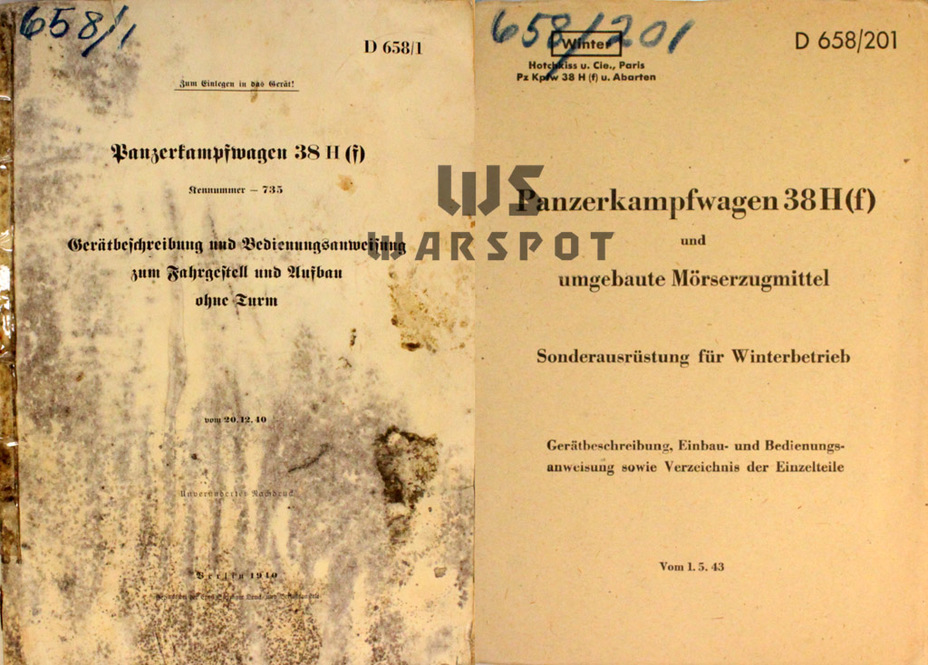
In 1940 the H 35 was given the index Pz.Kpfw.35 H 734 (f) and the H 39 became Pz.Kpfw.38 H 735 (f). This name gave roots to the myth of a Hotchkiss H 38 tank, which never existed. These indices did not survive for long. The tanks soon became Pz.Kpfw.35 H (f) and Pz.Kpfw.38 H (f). The latter made up the majority of tanks used by the Germans.
Alongside the SOMUA S 35
The first captured Hotchkiss H 39 tanks were used by the Germans during the Battle of France, although these were ad hoc in nature. A decision was made to form two tank divisions made up of captured vehicles in late summer of 1940. Captured tanks also took an active part in training for Operation Sealion. By then the Germans started to understand that the more numerous Renault R 35 were white elephants. The Hotchkiss tanks were more mobile and, most importantly, more reliable. The occupants also valued another French tank highly, the SOMUA S 35. These two tanks were often used together in the German army.
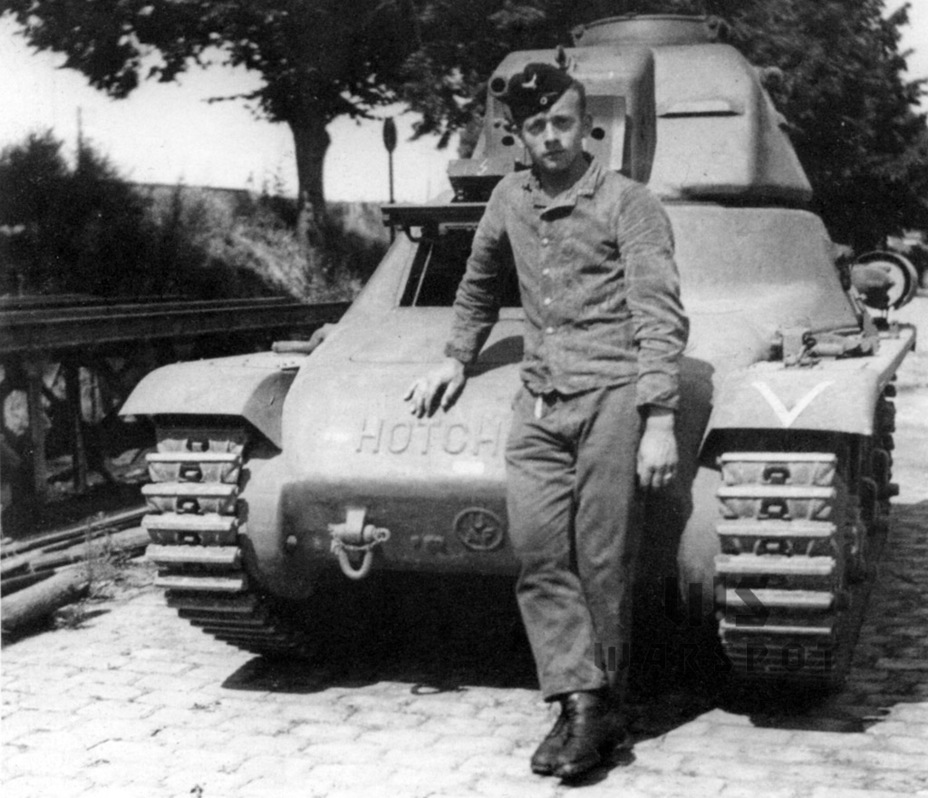
TO&Es for units armed with captured French tanks were ready by the spring of 1941. A tank platoon consisted of one Pz.Kpfw.35 S (f) and four Pz.Kpfw.38 H (f). A tank company consisted of 5 Pz.Kpfw.35 S (f) and 12 Pz.Kpfw.38 H (f), a tank battalion had 18 Pz.Kpfw.35 S (f) and 41 Pz.Kpfw.38 H (f), and a regiment 39 Pz.Kpfw.35 S (f) and 87 Pz.Kpfw.38 H (f).
The Pz.Kpfw.38 H (f) were the first to be assigned to units armed with captured vehicles. This was because repairs of the SOMUA S 35 took too long. For instance, the 201st Tank Regiment had 3 Pz.Kpfw.38 H (f) in every company by March 1941, but there were just two Pz.Kpfw.35 S (f) in the entire regiment. German crews were trained mostly on light tanks.
Despite its low weight, the French tank had a large appetite. 190 L of gas were needed for 100 km of travel on paved roads and 300 L for travel on dirt roads. To compare, the SOMUA S 35 was nearly twice as heavy but consumed 225 L and 400 L respectively.
Another issue was ammunition. There were no issues with 47 mm rounds, but only 190,000 37 mm rounds were available. Only 4 rounds per tank were allocated for training, which made it difficult to perform.
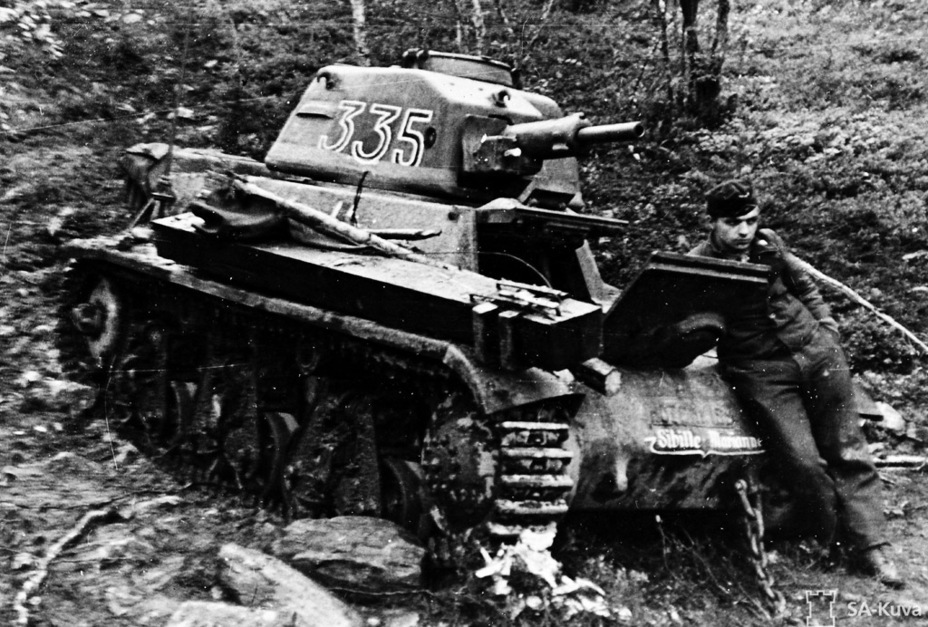
One of the first units equipped with light French tanks to see battle was the 2nd battalion of the 201st Tank Regiment. In March of 1941 it was sent to a secondary front, to Norway. On March 24th, 1941, the unit was renamed to the 211st Tank Battalion. Its authorized strength was 18 Pz.Kpfw.35 S (f) and 41 Pz.Kpfw.38 H (f). In reality, there were no more than 35 light tanks present.
The 202nd Tank Battalion was fully equipped in February of 1941 (although it only received this name on January 5th, 1943). It set out after the 201st battalion, in September of 1941. It ended up in Serbia where it was used against Partisans. The Pz.Kpfw.38 H (f) was an ideal vehicle for reprisal squads. The Yugoslavian Partisans didn't have much in the way of anti-tank weapons and it was difficult to deal with the Pz.Kpfw.38 H (f)'s thick armour. The tank showed itself well in the mountains.
The 212nd Tank Battalion, also armed with French tanks, was based in Crete and had 5 Pz.Kpfw.35 S (f) and 15 Pz.Kpfw.38 H (f) on hand.
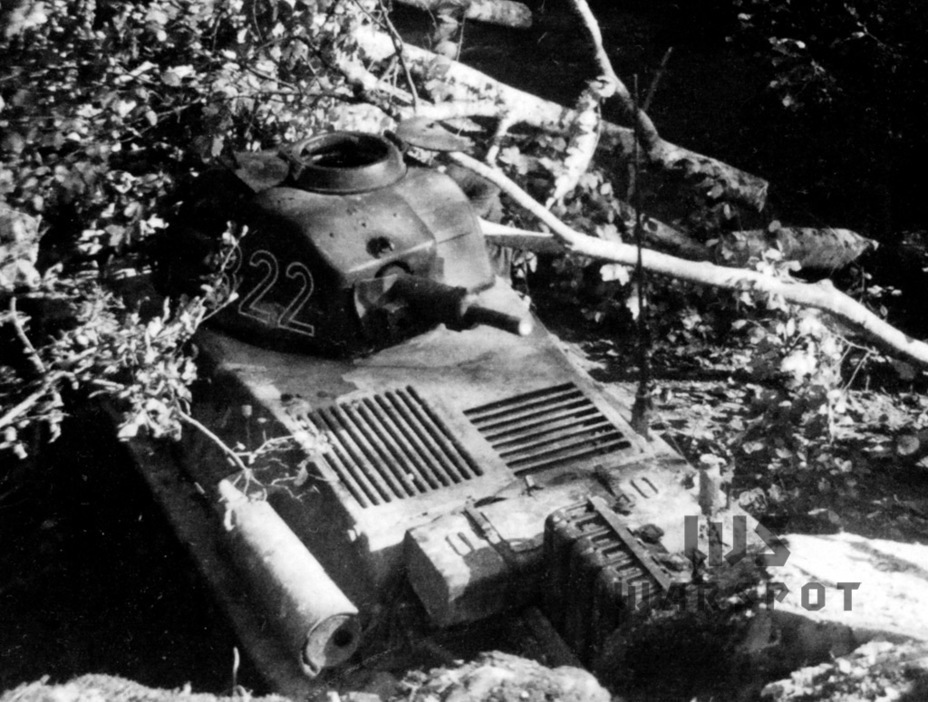
The use of the Pz.Kpfw.35 S (f) and Pz.Kpfw.38 H (f) on secondary fronts was considered a success. The Germans began to form new tanks units. The 214th Tank Battalion began forming in December of 1941. It received 15 Pz.Kpfw.35 S (f) and 42 Pz.Kpfw.38 H (f). It was located in Finland.
In the meantime, the 211st battalion received some combat experience. In June-July of 1941 it claimed 24 Soviet tanks with 4 of its own destroyed and 2 knocked out. There were more tanks lost for technical reasons: 10 units. This was one of the few cases of front line usage of the Pz.Kpfw.38 H (f). It showed itself well, but the Germans complained, for instance, that the 37 mm AP shot had insignificant beyond armour effects.
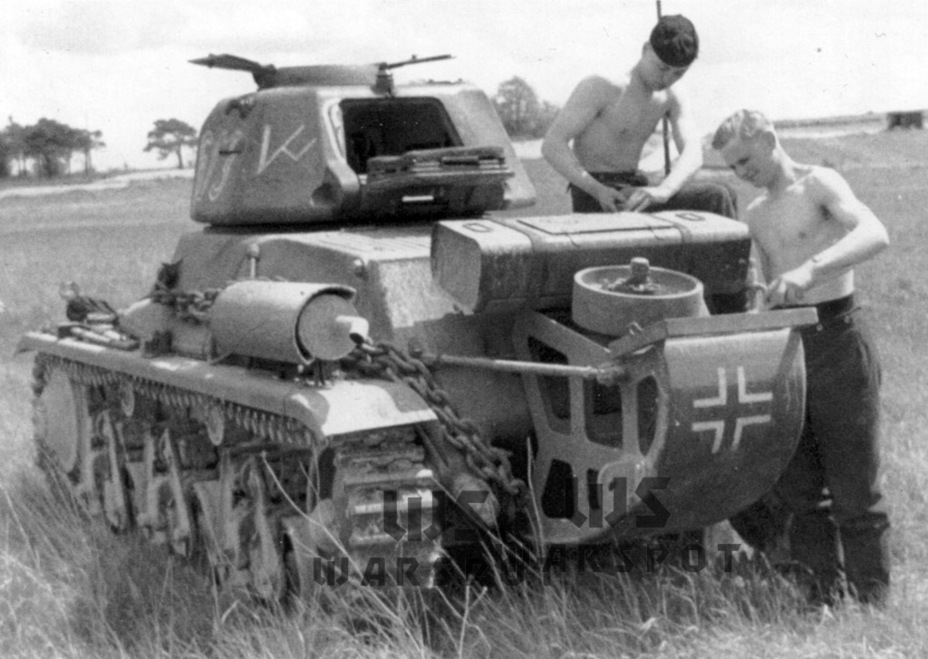
The Pz.Kpfw.38 H (f) played an important role of a learning tool for German tankers. They were used in this way in the 100th Tank Brigade formed in March of 1941. The brigade periodically passed its tanks on to newly forming units, but even in August of 1942 it still had 100 of these tanks, 80 of which were in running order. In late May of 1943 the brigade reported 77 Pz.Kpfw.38 H (f) tanks. There were a total of 147 of them left in France. French tanks were also used to train tank units that would later use German tanks. The most famous such unit was the 23rd Tank Division. It's no coincidence that its insignia was the Eiffel Tower. The Pz.Kpfw.38 H (f) remained a training aide in the summer of 1943. Crews of the 14th and 24th Tank Divisions trained on these tanks.
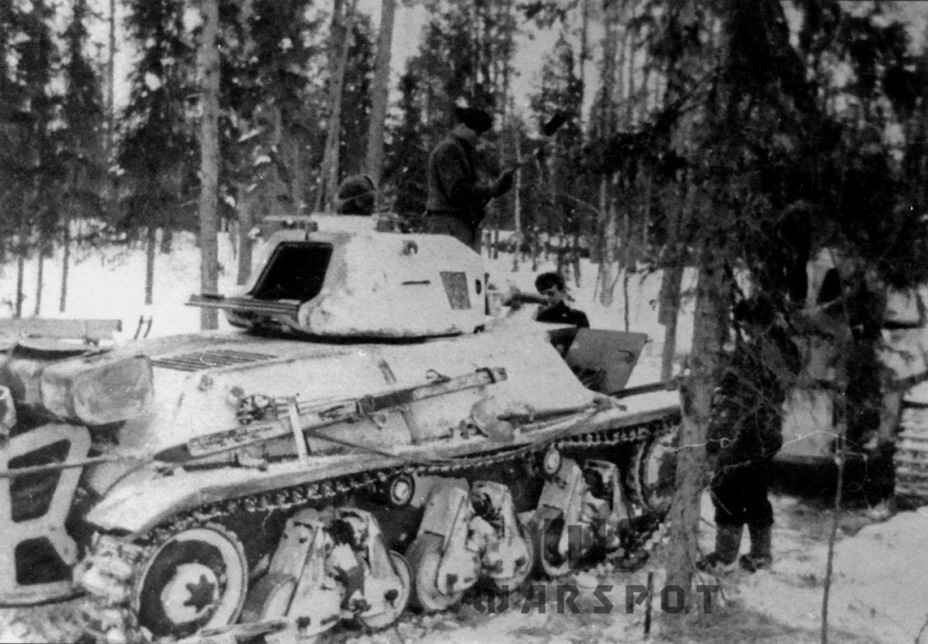
The second largest group of Pz.Kpfw.38 H (f) tanks was located in Northern Europe. In addition to the 33 tanks in the 211th Tank Battalion, 68 more were located in Norway. The 25th Tank Division had the most French tanks: 15 Pz.Kpfw.35 S (f) and 42 Pz.Kpfw.38 H (f). These were tanks from the 214th Tank Battalion, which was included into the division. The other tanks were spread out between infantry divisions.
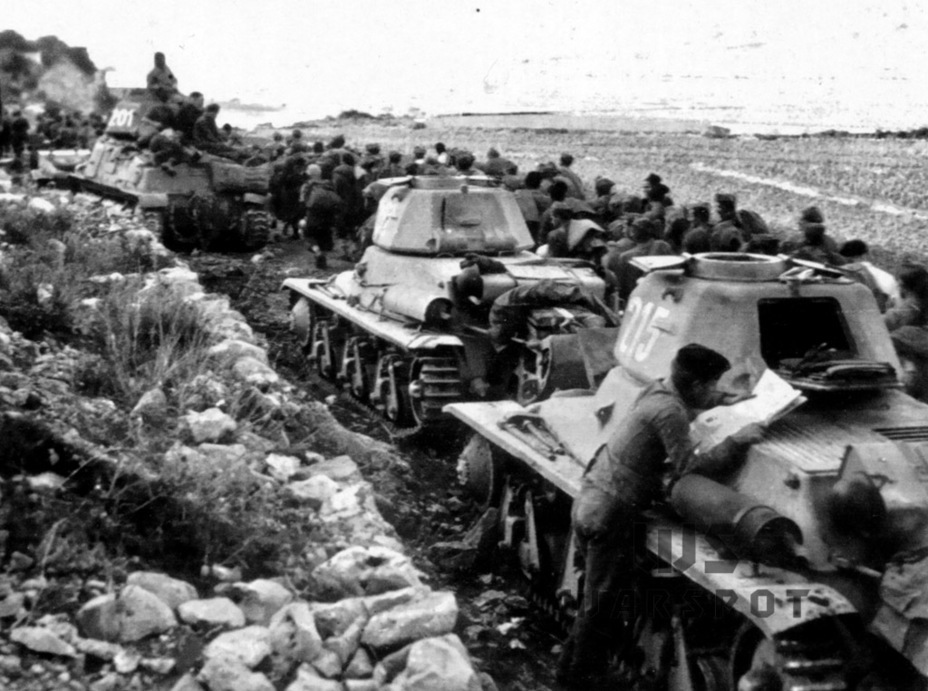
The claim that German police units used most Hotchkiss tanks is incorrect. At its peak, the reprisal groups had no more than a third of these tanks. Only 15 Pz.Kpfw.38 H (f) were on the Eastern Front by May of 1943, all of which were in the hands of the Hungarian guard division (Ung.Sich.div) which fought partisans. More French light tanks were used for anti-Partisan duty in the Balkans. In addition to the 202nd Tank Battalion (41 tanks), there were 36 Pz.kpfw.38 H (f) in the 12th Special Purpose Tank Company. In the summer of 1944 it was rearmed with Italian Carro Armato M 42 tanks. Nevertheless, there were still 8 Pz.Kpfw.38 H (f) in the company in November. In the fall of 1943 9 tanks were sent to the Prinz Eugen SS division, which also fought in the Balkans. The Germans also gave a small number of Pz.Kpfw.38 H (f) tanks to the Ustaše.
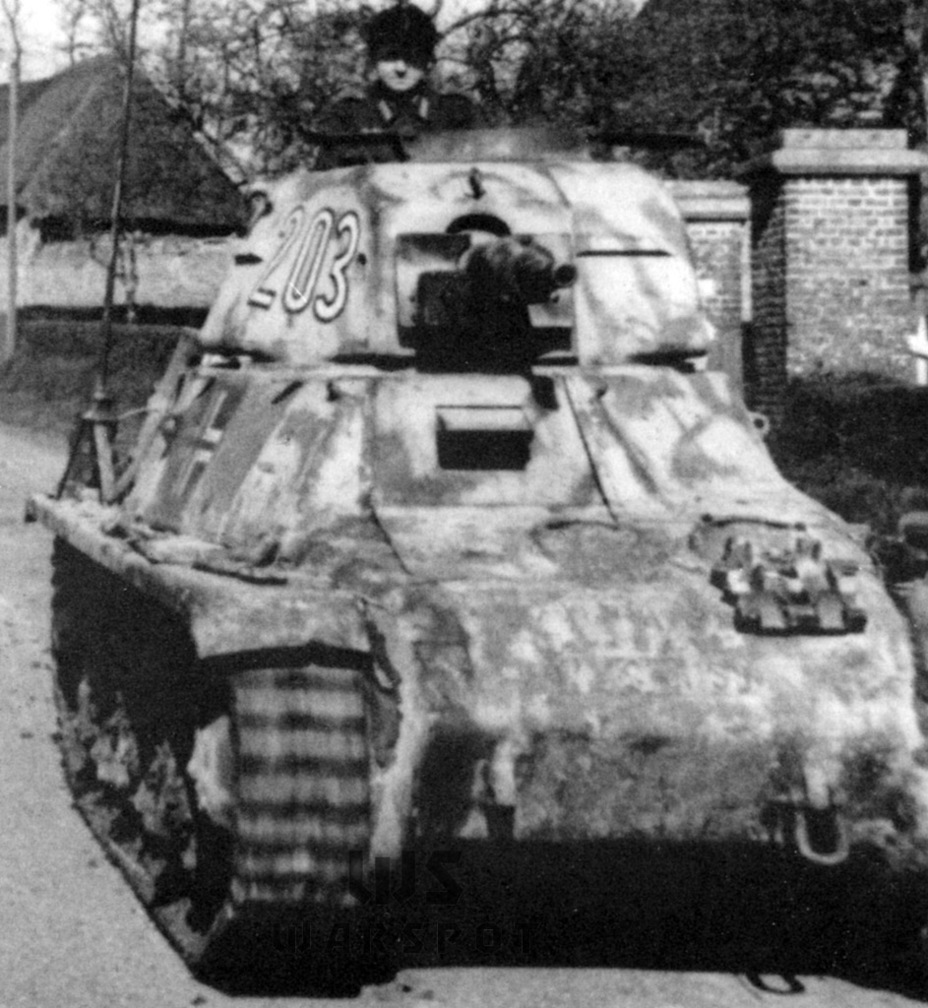
Unlike the Renault R 35, which the Germans actively shared with their allies, they kept a much tighter grip on the Hotchkiss H 39. In addition to the aforementioned Hungarians and Croats, 19 tanks were given to Bulgaria in 1943.
By that time the tank's combat effectiveness was low. Nevertheless, a large number of Pz.Kpfw.38 H (f) tanks were used in Normandy when the Allies landed. The 205th Tank Battalion had 19 units, the 206th had 16, and 8 to 13 were listed in the 100th Reserve Tank Battalion. Only 7 tanks of this type remained by the end of 1944. A portion of the tanks used by the Germans was captured.
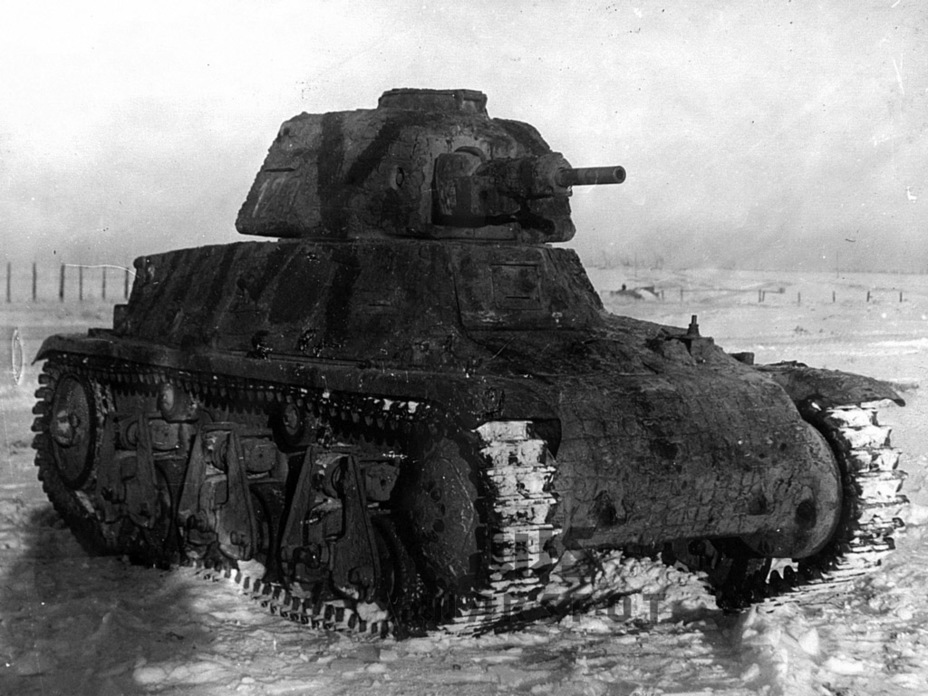
The Pz.Kpfw.38 H (f) lived the longest in Scandinavia and the Balkans. In late 1944 they were still used in Norway in coastal defense units. They also fought in Finland (chiefly tanks from the 21st Tank Battalion). In 1944 these tanks and the Pz.Kpfw.35 S (f) were covered in Zimmerit. It is not known which Soviet units they encountered, but several Pz.Kpfw.38 H (f) were captured by the Red Army in August-September of 1944.
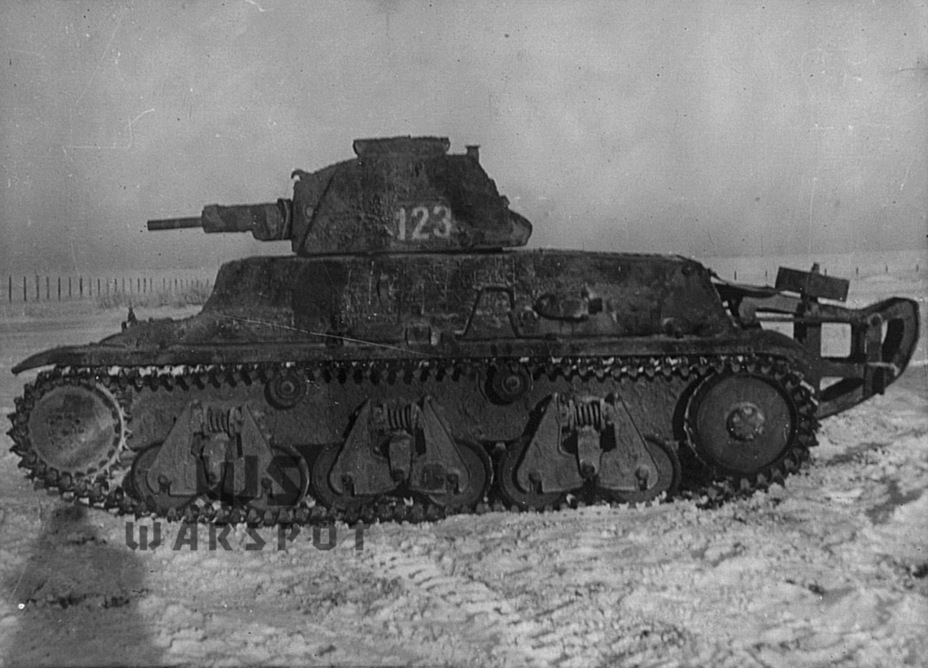
A tank from the first company with turret number 123 was delivered to the NIBT Proving Grounds in Kubinka in the fall of 1944. This was the first Pz.Kpfw.38 H (f) captured on the Eastern Front. Its name was not even known: it was merely called «Hotchkiss light tank» in the documents. The study of the vehicle was limited to composition of a short list of characteristics where a number of them (speed, engine power, etc) remained blank. The obsolete tank was not very interesting. It was left on the proving grounds' museum lot and today can be seen at Patriot Park, although the Zimmerit coating was not preserved.
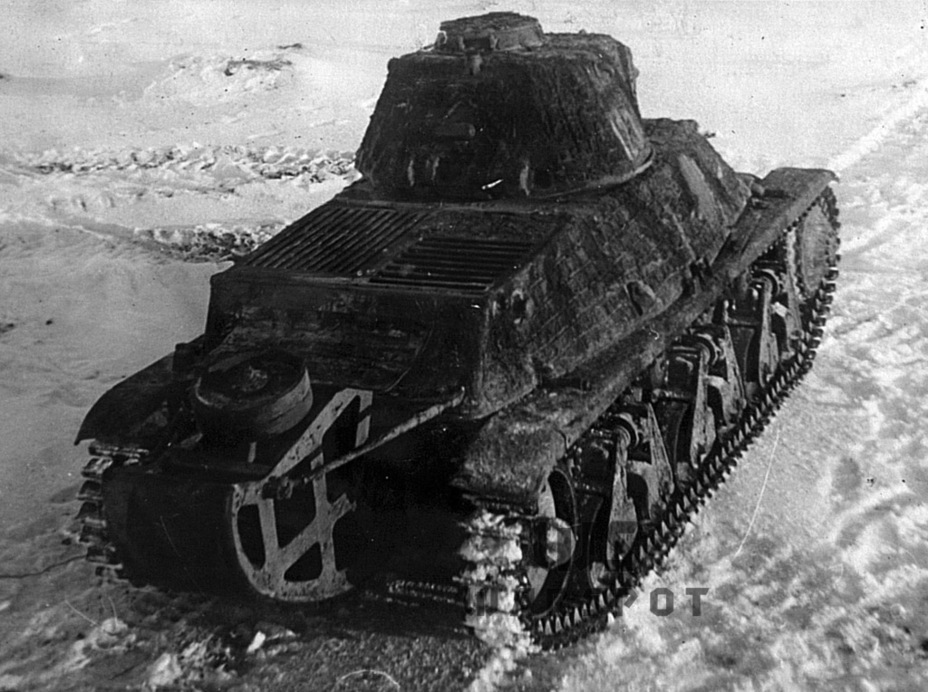
The Pz.Kpfw.38 H (f) was the only French light tank used in its intended role on the Eastern Front in 1941. This was a very good second line tank, as a result of which it remained in service for a long time, even after the end of WWII.
From Gabon to Israel
The Hotchkiss H 39 and Pz.Kpfw.38 H (f) were not used just by Germany and its allies after the fall of France in 1940. The Hotchkiss H 39 was the first tank of the Fighting French. Tanks from the 342nd Independent Tank Company located in Norway ended up in England, where the tank crews joined de Gaulle. In October of 1940 these tanks were sent to Gabon to take French colonial holdings from the Vichy regime. Here the reliability of the tanks came in handy. The Hotchkiss H 39 drove for almost 800 km, 330 of which were through jungle. Later, in April of 1939, the tanks were used in another French colony: Syria. The former 342nd Tank Company was renamed to the 1st Tank Company and fought in the battle for Damascus.
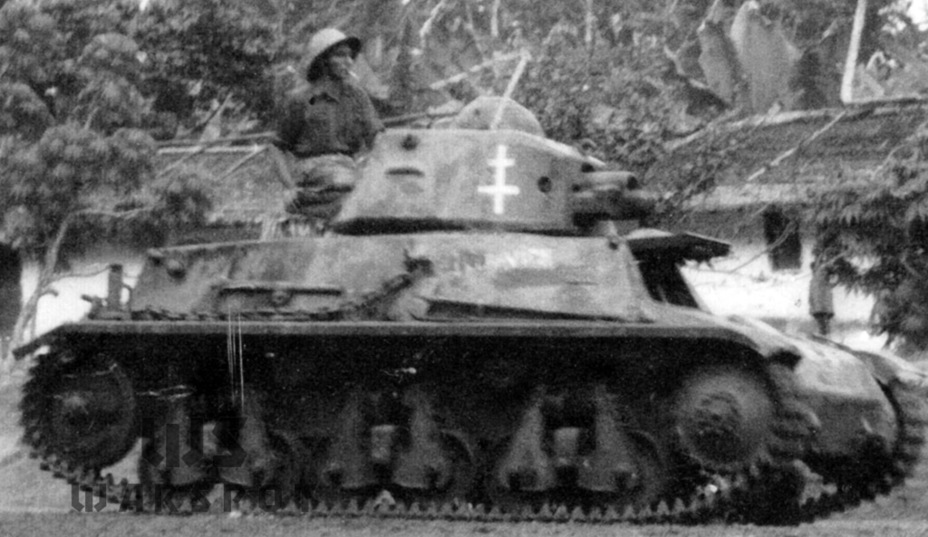
The Vichy forces also used the Hotchkiss tanks. The 1st African Hunters Regiment (1 RTA) with 13 H 35 and 14 H 39 tanks was formed in Tunis. After the fall of France the regiment remained loyal to Vichy and gained a number of Renault R 35 tanks. The 1 RTA clashed with American tanks in November of 1942. Its crews claimed four Light Tanks M3A1 knocked out. A ceasefire was declared on November 11th. These tanks no longer saw battle. The French units that joined the Allies were armed with American tanks.
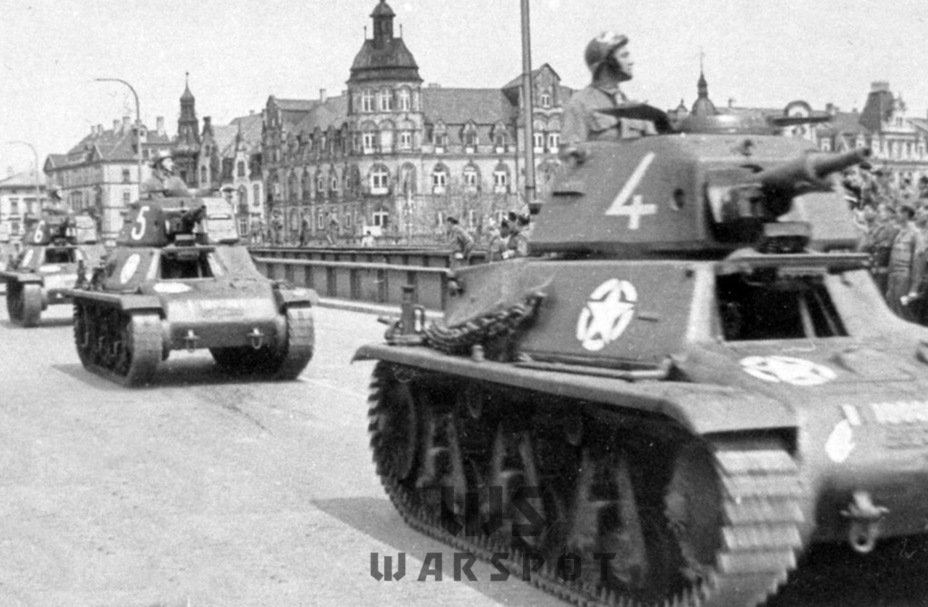
As mentioned above, not all Pz.Kpfw.38 H (f) tanks were destroyed during the fighting in France. Some were captured in running order. They were immediately put into service with the Free French, although due to their worn out state and low effectiveness in battle this was more of a matter of prestige. Several tanks were captured at the Hotchkiss factory by the Resistance and put to use in the liberation of Paris. These tanks were included into the 12th Dragoon Regiment but did not do much in it.
After the war the tanks took part in the occupational forces in Germany. A number of the tanks were sent to Indochina and used in police units. Ironically, the tanks that were formerly used by German reprisal squads were now used for the same purpose by the French. The results were similar and the French were kicked out of Indochina by the mid 1950s.
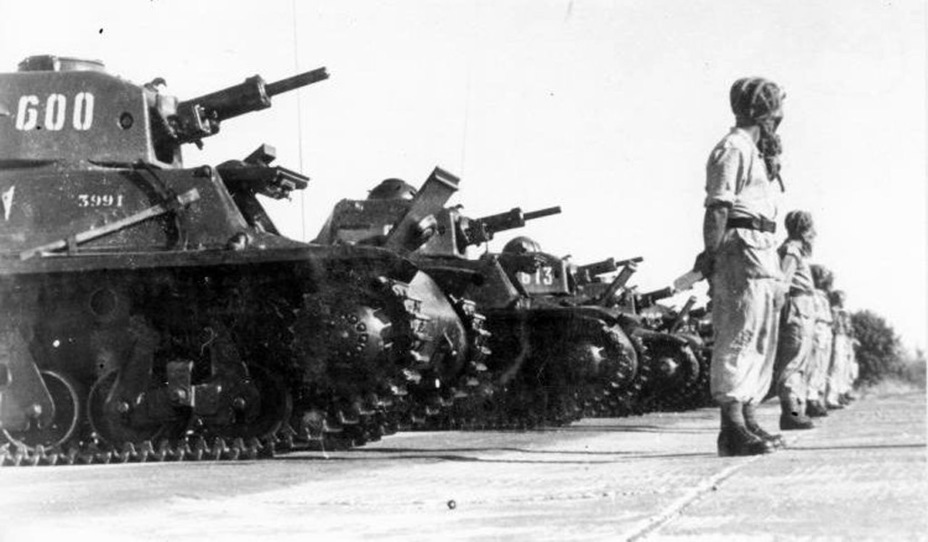
Another ten Pz.Kpfw.38 H (f) tanks had an even more interesting fate. They became the first tanks to be officially purchased by Israel. Initially the plan was to buy 15 tanks. The deal was signed in March of 1948 and the tanks arrived on June 15th. These were the tanks' fourth owners. The tanks were equipped in the German style and were repainted. At least a handful of tanks retained their commander's cupolas. The tanks were combined in the so called «Russian company» staffed by Russian speaking tankers. As a part of the 8th Armoured Brigade the French tanks with a German tune-up took part in capturing the Lod airport (modern day Ben-Gurion airport). Officially, the Hotchkiss H 39 was removed from service in 1952, but they were put into storage in December of 1948. Only one tank was combat ready in March of 1949.
The information that Israeli tanks received more powerful guns is incorrect. These rumours stem from a replica gun installed on a monument that was occasionally used in ceremonies. Only one Israeli H 39 tank survives to this day, and it can be seen on display in Latrun.
Translated by Peter Samsonov. Read more interesting tank articles on his blog Tank Archives.
Sources:
- Hotchkiss H 35/H 39, Pascal Danjou, TRACKSTORY №6, 2006;
- Hotchkiss H 39, Pascal Danjou, Focus №5, 2009;
- Panzer Tracts 19-1 – Beute — Panzerkampfwagen Czech, Polish, And French Tanks Captured From 1939 To 1940, Thomas L. Jentz, Werner Regenberg, 2007, ISBN 0-9771643-7-3;
- https://bukvoed.livejournal.com/209631.html;
- Central Archives of the Russian Ministry of Defence;
- Author's photo archive.






